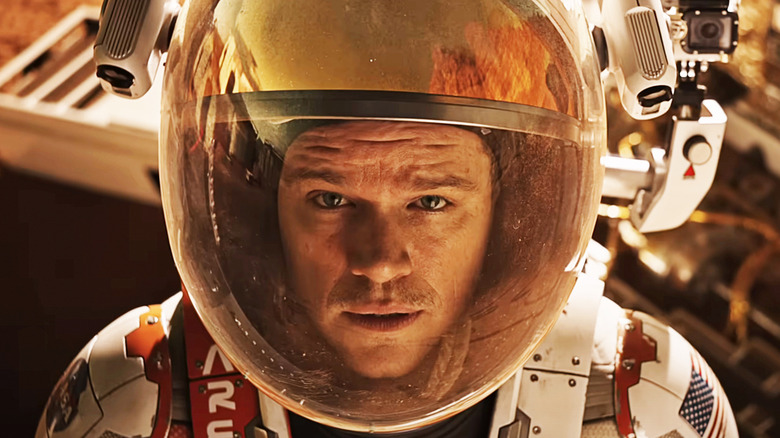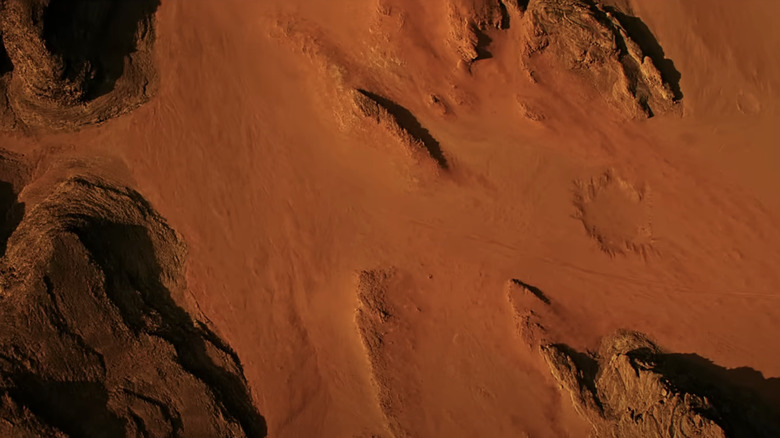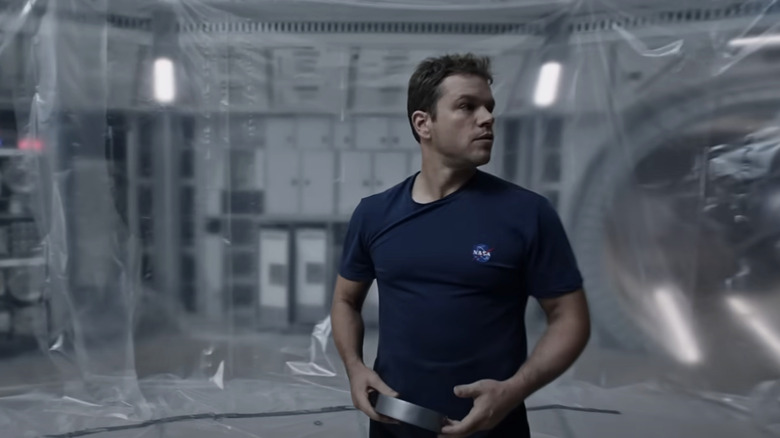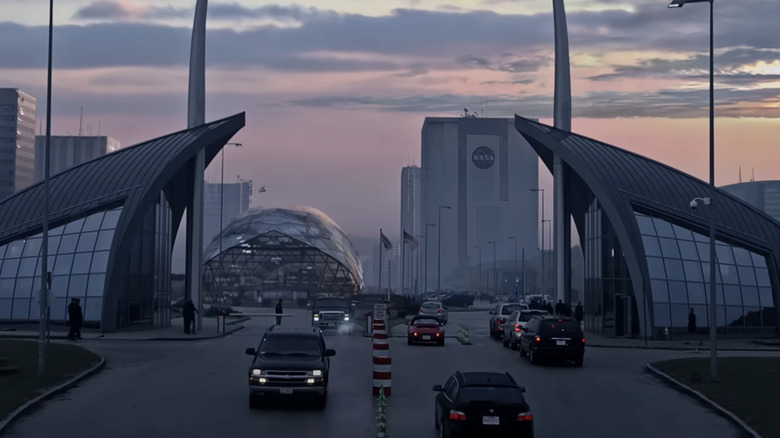Where Was The Martian Filmed? Every Major Location Explained
Back in 2014, we all got to see what it would look like if Matt Damon became stranded on a distant planet when the "Bourne Identity" star had a cameo in Christopher Nolan's "Interstellar." Damon actually played the villain in that brief appearance, but it turned out that was just a way to whet our appetite for more Damon space survivalism — as just a year later, we'd once again see him trapped on an alien world, and this time he was very much the good guy.
Ridley Scott's 2015 science-fiction thriller "The Martian" saw Damon play Dr. Mark Watney, a NASA astronaut and botanist who ends up stranded on Mars after a dust storm forces his crew to make a hasty evacuation, leaving him behind. "The Martian" then tells a thrilling survival tale of human ingenuity and perseverance, with Watkins having to keep himself alive for four years before a rescue team can reach him.
Much of the movie is, of course, set on the red planet, but there were plenty of other locations in "The Martian" that required the film's creatives to use a combination of real-world locales and sets erected on an impressively large sound stage. Here are all the major filming locations for "The Martian."
The Jordanian desert stood in for the harsh Martian landscape
It's not all that easy to create a realistic depiction of Mars. The cold, dusty desert surface is full of canyons, extinct volcanoes, and even, believe it or not, polar ice caps. Thankfully, the fourth planet from the sun is one of the few worlds to which we've sent rovers, so we have a pretty good understanding of what the surface of Mars actually looks like, and it seems Ridley Scott was determined to make "The Martian" scientifically accurate enough to get an realistic depiction of the red planet. As the director once told The Hollywood Reporter, "I wanted to get it right. The way Stanley [Kubrick] got it right on '2001.'"
The filmmaker had shot in Jordan while working on "G.I. Jane" and immediately thought of it for his survival thriller. As he explained to THR, "There's a perfection to the simplicity of the environment. There's no vegetation. It's crisp and magnificent. I knew it was the one place to do a strange planet." So, for "The Martian," Scott and his crew travelled to Wadi Rum (Valley of the Moon), a protected area in the south of Jordan close to the border with Saudi Arabia. Packed with gorges and caverns, the arid land was perfect for Scott's project and had already been immortalized by Hollywood multiple times, appearing in 1962's "Lawrence of Arabia," the "Star Wars" franchise, and multiple other features. It was also one of the main filming locations for Denis Villeneuve's two-part "Dune" adaptation.
The Martian's indoor scenes were shot on one of the largest sound stages in the world
Actually constructing a surface habitat pod and having Matt Damon live in the arid conditions of Wadi Rum was going to be a step too far in terms of realism for Ridley Scott. Considering "The Martian" was also shot at breakneck speed, figuring out how to build sets in the Jordanian desert just wasn't on the cards. So, Scott and the "Martian" crew turned to Korda Studios in the Hungarian village of Etyek, just outside of Budapest. This impressive complex is home to the largest soundstage in the world — an expansive space larger than a football field that the production team used to recreate the surface of Mars indoors. According to production designer Arthur Max, the crew had to bring in roughly a thousand metric tons of custom-colored sand and soil, which took three weeks just to deliver. It was on this stage that the dust storm sequence was shot practically, using a heck of a lot of industrial fans.
"The Martian" filmed on several other stages at Korda, too, with the flight deck of the Hermes spaceship, which transports Dr. Mark Watney and his fellow astronauts to Mars, being built on one stage while a special "hothouse" area was constructed to grow the potatoes that Damon's character cultivates in the movie. In addition, a NASA mission control room was built on another stage while the entrance to Korda Studios, flanked by two wing-like sculptures, was actually used to depict the entrance to the NASA facility.
Other shots from The Martian were captured in multiple places around the world
Mars and NASA were clearly the most important locations in "The Martian" but there were still several other shots needed between the footage of Wadi Rum and the Korda Studios soundstages. The Johnson Space Center, for instance, was actually the Balna Events Centre, otherwise known as the Budapest Whale, which sits on the bank of the river Danube. NASA's real Johnson Space Center in Houston, Texas, was used for establishing shots, but the Whale provided multiple interiors for the shoot, including the offices of Teddy Sanders (Jeff Daniels) and Annie Montrose (Kristen Wiig), conference rooms, a flight control room, and more.
Other establishing shots included the Müpa Performing Arts Centre in Budapest, which stood in for the building that houses the Chinese NASA equivalents after they agreed to help rescue Dr. Mark Watney. The building itself is near the National Theatre and Rákóczi Bridge in Budapest. Meanwhile, the Jet Propulsion Laboratory in Pasadena, near Los Angeles, provided exteriors for the Satellite Communications Center.
All of that, combined with Ridley Scott's commitment to scientific accuracy, added up to a pretty convincing movie, even if Matt Damon wasn't all that interested in the science behind "The Martian."



